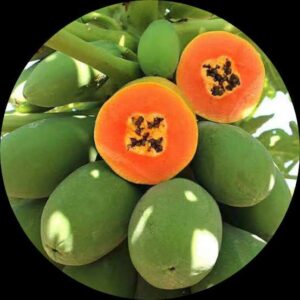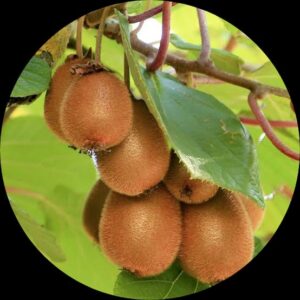- Empty cart.
- Continue Shopping
Rain Forest Plum (All Season)
Original price was: ₹1,750.00.₹900.00Current price is: ₹900.00.
Genus : Engenia
The Rain Forest Plum, also known as the Abiu, is a tropical fruit that is native to the Amazon region of South America. This fruit is known for its unique texture and sweet taste. The Rain Forest Plum has a yellow to orange color and a smooth, round shape. The fruit is typically around 2-3 inches in diameter and has a soft, jelly-like flesh inside. The Rain Forest Plum is often used in jams, jellies, and sauces, as well as in desserts such as puddings and ice cream. It is also sometimes eaten fresh, or made into a juice. The Rain Forest Plum is a good source of vitamins and minerals and is considered to be beneficial for the digestive system.
The Rain Forest Plum plant, also known as the Rainforest Plum or Rainforest Plum Tree, is a fascinating species found in tropical rainforests. Here is a more detailed description of this unique plant:
1. Appearance: The Rain Forest Plum is a medium-sized tree that can reach heights of up to 15 meters (50 feet). It has a dense canopy with glossy, dark green leaves that provide ample shade beneath. The tree’s trunk is usually straight and sturdy, covered in rough, brown bark.
2. Fruits: The most distinctive feature of the Rain Forest Plum is its fruit. The tree produces small to medium-sized plum-like fruits that are round or slightly elongated. The skin of the fruit is smooth and can range in color from deep purple to reddish-brown. When ripe, the fruits are juicy and have a sweet and tangy flavor.
3. Ecological Importance: The Rain Forest Plum plays a crucial role in the rainforest ecosystem. Its fruits are a valuable food source for various animals, including birds, bats, monkeys, and other mammals. By dispersing the seeds through their droppings, these animals contribute to the tree’s reproduction and the dispersal of its genetic material.
4. Medicinal Uses: In traditional medicine practices, parts of the Rain Forest Plum tree, such as the bark and leaves, have been used for their medicinal properties. They are believed to have antioxidant and anti-inflammatory effects and have been employed to treat various ailments, including digestive issues, skin conditions, and respiratory problems.
5. Habitat and Distribution: As the name suggests, the Rain Forest Plum thrives in the moist and humid environment of tropical rainforests. It is primarily found in regions such as the Amazon rainforest in South America, the Congo Basin in Africa, and the rainforests of Southeast Asia. These trees prefer well-drained soils and require a significant amount of rainfall for optimal growth.
6. Threats and Conservation: Like many rainforest species, the Rain Forest Plum faces numerous threats due to deforestation, habitat fragmentation, and climate change. The destruction of rainforest habitats poses a significant risk to the survival of this plant species, as it relies on the intact ecosystem for its reproduction and ecological interactions. Efforts are being made to conserve rainforest areas and protect the biodiversity they harbor, including the Rain Forest Plum.
Overall, the Rain Forest Plum is a remarkable plant that contributes to the biodiversity and ecological balance of tropical rainforests. Its unique appearance, delicious fruits, and potential medicinal properties make it an important species to study and protect in the face of environmental challenges.












Reviews
There are no reviews yet.